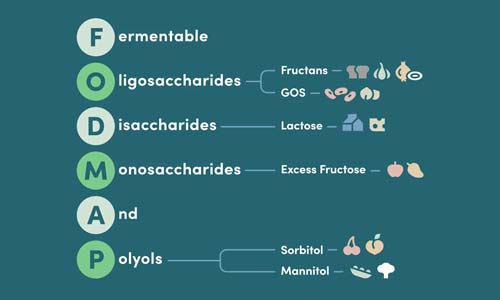Is Olive Oil Low FODMAP? Essential Gut-Friendly Guide

Key Takeaways
- Olive oil is completely low FODMAP as it contains zero fermentable carbohydrates and is safe for sensitive digestion in all tested serving sizes.
- Extra virgin olive oil offers rich flavor and antioxidants, while refined olive oil is better suited for high-heat cooking due to its higher smoke point.
- Garlic and onion flavors can be safely infused into olive oil because FODMAPs are water-soluble and do not transfer to the oil, but solid pieces must be removed promptly to avoid botulism risk.
- Persistent digestive symptoms from olive oil are usually due to portion size, fat malabsorption, or contamination with high-FODMAP ingredients, not the oil itself.
- When dining out or buying packaged goods, always verify that olive oil is pure and free from garlic, onion, or hidden high-FODMAP additives to ensure digestive safety.
Table of Contents
- Olive Oil and the Low FODMAP Diet, Quick Answer & Science-Backed Basics
- How to Choose Quality Olive Oil for Low FODMAP Cooking
- Infused Olive Oils, Safely Enjoying Garlic and Onion Flavors
- Cooking with Olive Oil, Flavorful, Low FODMAP Techniques
- Troubleshooting, What If Olive Oil Still Causes Digestive Symptoms?
- Olive Oil vs. Other Oils, Flavor, Nutrition, and FODMAP Safety
- Navigating Restaurants & Packaged Goods, Olive Oil Safety Beyond Home
- Advanced Tips, Elevating Gourmet Low FODMAP Flavor with Olive Oil
- Navigating Restaurants, Meal Delivery & Packaged Goods, Olive Oil Safety Beyond Home
Is Olive Oil Low FODMAP? Everything You Need to Know for Delicious, Digestive-Friendly Meals
Olive Oil and the Low FODMAP Diet, Quick Answer & Science-Backed Basics
Is olive oil low FODMAP? Absolutely. Olive oil consists entirely of fats, which contain no fermentable carbohydrates that trigger digestive symptoms. FODMAPs (fermentable oligosaccharides, disaccharides, monosaccharides, and polyols) are specific types of carbohydrates that can cause bloating, gas, and discomfort in sensitive individuals. Since olive oil contains zero carbohydrates, it's naturally FODMAP-free.
Monash University testing confirms olive oil remains low FODMAP even at ½ cup per meal, far beyond typical cooking amounts. This makes olive oil low FODMAP cooking both safe and unlimited for portion control purposes.
| Oil Type | FODMAP Content | Best Cooking Use |
|---|---|---|
| Extra Virgin Olive Oil | Zero FODMAPs | Dressings, low-heat sautéing |
| Coconut Oil | Zero FODMAPs | High-heat cooking, baking |
| Avocado Oil | Zero FODMAPs | High-heat roasting, grilling |
| Sunflower Oil | Zero FODMAPs | Neutral-flavor cooking |
How to Choose Quality Olive Oil for Low FODMAP Cooking

Extra virgin olive oil offers the richest flavor and highest antioxidant content, while refined olive oil provides neutral taste for delicate dishes. The key difference lies in processing: extra virgin undergoes minimal processing, preserving natural compounds and robust flavor.
Label vigilance prevents FODMAP surprises. Always check ingredient lists for hidden garlic pieces, onion extracts, or "natural flavors", code words that often mask high-FODMAP additives. Pure olive oil should list only one ingredient: olives.
Olive Oil Selection Checklist:
• Single ingredient (olives only)
• Dark glass bottle (protects from light damage)
• Harvest date within 18 months
• No added flavoring agents
Pair your quality olive oil with Gourmend shelf-stable broth cartons for maximum flavor depth. Our broths use chive sprigs and green leek tops to deliver that coveted onion-like richness without digestive compromise.
Infused Olive Oils, Safely Enjoying Garlic and Onion Flavors
The science is clear: garlic and onion flavors transfer to oil while FODMAPs stay behind. Fructans (the problematic FODMAPs in garlic and onions) are water-soluble, not oil-soluble. This means properly made infused oils capture aroma and taste without digestive triggers.
Safe Home Infusion Method:
1. Heat ¼ cup olive oil to 180°F (not bubbling)
2. Add garlic-chive stems or chive sprigs
3. Infuse for 2-3 minutes maximum
4. Remove all solid pieces immediately
5. Store refrigerated, use within one week
Critical safety note: Leaving plant material in oil creates botulism risk. Always strain completely and refrigerate promptly.
At Gourmend Foods, we achieve similar depth using chive sprigs, green leek tops, and garlic-chive stems in our broths and seasonings, delivering gourmet complexity that's naturally olive oil low FODMAP compatible.
Cooking with Olive Oil, Flavorful, Low FODMAP Techniques
Olive oil's versatility makes it the cornerstone of low FODMAP cooking, from high-heat roasting to delicate salad dressings. Its neutral fat profile won't interfere with digestion, while its rich flavor enhances everything from quinoa grain bowls to roasted vegetables.
Master these core techniques:
- Sautéing: Heat 1-2 tablespoons olive oil over medium heat; add chive sprigs or green leek tops for aromatic base
- Roasting: Toss vegetables with olive oil and herbs; roast at 400°F for caramelized depth
- Dressings: Whisk 3:1 ratio olive oil to citrus juice; season with fresh herbs and Gourmend's low FODMAP seasonings
- Grain preparation: Drizzle over cooked quinoa or rice; add small portions of lentils (under ⅓ cup cooked per serving)
For restaurant-quality umami, combine olive oil with Gourmend shelf-stable broth carton, our broths feature nori seaweed and oyster mushrooms for natural depth that pairs beautifully with olive oil's richness.
If you're looking for delicious ways to use olive oil in low FODMAP recipes, try these low FODMAP crisp roasted baby potatoes for a simple, crowd-pleasing side dish.
Troubleshooting, What If Olive Oil Still Causes Digestive Symptoms?

Since is olive oil low FODMAP has a definitive "yes" answer, persistent symptoms likely stem from other factors. Pure olive oil contains zero FODMAPs, so digestive discomfort typically indicates fat malabsorption, excessive portions, or cross-contamination with high-FODMAP ingredients.
- Portion check: Start with 1 tablespoon per meal; gradually increase
- Purity verification: Ensure no garlic pieces, onion powder, or "natural flavors" in ingredient list
- Combination analysis: Track which foods you're cooking with the olive oil
- Cross-contamination: Use dedicated utensils and clean pans
If symptoms persist, try our low FODMAP recipe conversion tool to identify hidden triggers in your meal combinations. Sometimes the issue isn't the olive oil itself, but rather high-FODMAP ingredients mixed into the same dish.
For a hearty main course that showcases olive oil's versatility, check out this low FODMAP braised short ribs recipe.
Olive Oil vs. Other Oils, Flavor, Nutrition, and FODMAP Safety
All pure cooking oils are naturally olive oil low FODMAP compliant, but they differ significantly in flavor, nutrition, and culinary applications. Understanding these distinctions helps you choose the right oil for each cooking method.
| Oil Type | FODMAP Status | Smoke Point | Best Uses | Flavor Profile |
|---|---|---|---|---|
| Extra Virgin Olive Oil | Low FODMAP | 375°F | Dressings, low-heat sautéing | Fruity, peppery, complex |
| Refined Olive Oil | Low FODMAP | 465°F | High-heat cooking, roasting | Mild, neutral |
| Coconut Oil | Low FODMAP | 350°F | Baking, medium-heat cooking | Subtle coconut, tropical |
| Avocado Oil | Low FODMAP | 520°F | High-heat frying, grilling | Neutral, buttery |
Olive oil's advantage: Superior antioxidant content, Mediterranean health benefits, and unmatched flavor complexity. While other oils serve specific cooking needs, olive oil delivers both culinary excellence and digestive safety, the same philosophy behind Gourmend's approach to creating broths that never compromise on flavor or gut health.
For more on how other healthy fats fit into a low FODMAP lifestyle, see our guide: is avocado low FODMAP.
For a scientific perspective on FODMAPs and infused oils, refer to this Monash University article on onion, garlic, and infused oils.
Navigating Restaurants & Packaged Goods, Olive Oil Safety Beyond Home
Dining out requires vigilance since restaurants often infuse oils with garlic cloves or onion pieces, creating FODMAP contamination. Even though is olive oil low FODMAP in its pure form, restaurant preparations can introduce problematic ingredients.
Essential questions for servers:
- "Is this cooked in pure olive oil, or does it contain garlic or onion pieces?"
- "Are there any seasonings or flavor additives mixed into the oil?"
- "Can you prepare this with plain olive oil instead of the house blend?"
Packaged goods red flags: Avoid products listing "natural flavors," "garlic-infused," or "herb blend" without specific ingredient breakdowns. Safe options clearly state "100% olive oil" or "extra virgin olive oil" as the sole ingredient.
For reliable low FODMAP meal solutions, stick with Gourmend shelf-stable broth cartons, our gold-standard approach ensures clean labels and digestive safety without the guesswork of competitor brands.
For a gourmet main dish that highlights olive oil, try this simple low FODMAP gourmet risotto recipe.
To dive deeper into the science of FODMAPs and digestive health, see this peer-reviewed article on FODMAPs and gastrointestinal disorders.
Advanced Tips, Elevating Gourmet Low FODMAP Flavor with Olive Oil

Create restaurant-quality emulsified dressings by slowly whisking olive oil into lemon juice or rice vinegar while adding a tablespoon of Gourmend broth for body and complexity. This technique creates silky, stable dressings that cling beautifully to greens.
For Mediterranean-inspired depth, warm olive oil gently with fresh chive sprigs and garlic-chive stems, our approved substitutions that deliver aromatic complexity without digestive consequences. Remove the herbs before serving to maintain the infused flavor safely.
| Flavor Goal | Traditional Ingredient | Gourmend-Approved Substitute | Olive Oil Application |
|---|---|---|---|
| Onion depth | Onion bulbs | Chive sprigs | Gentle infusion, 3-5 minutes |
| Garlic aroma | Garlic cloves | Garlic-chive stems | Low heat infusion, strain |
| Umami richness | Mushroom powder | Oyster mushrooms + nori | Sauté base with oil |
Finish dishes with a drizzle of your best extra virgin olive oil, this technique preserves the oil's delicate flavors while adding luxurious richness to completed plates.
Navigating Restaurants, Meal Delivery & Packaged Goods, Olive Oil Safety Beyond Home
When dining out, ask specific questions about olive oil preparations: "Does your olive oil contain any garlic pieces or onion flavoring?" Most restaurants use plain olive oil, but flavored versions may harbor high-FODMAP additions.
For packaged goods, scan ingredient lists carefully. Terms like "natural flavors" or "spice blends" in olive oil products often indicate hidden garlic or onion derivatives. Stick to single-ingredient olive oils or those specifically certified low FODMAP.
When ordering meal delivery, specify "plain olive oil only" in special instructions. For reliable packaged options, choose Gourmend shelf-stable broth cartons for clean, trustworthy ingredients every time.
Frequently Asked Questions
Is olive oil safe for people following a low FODMAP diet, and why?
Yes, olive oil is completely safe for a low FODMAP diet because it contains zero fermentable carbohydrates. As a pure fat, it does not trigger digestive symptoms related to FODMAPs and is suitable for sensitive digestion in all typical serving sizes.
What are the differences between extra virgin and refined olive oil in terms of cooking and FODMAP safety?
Both extra virgin and refined olive oils are low FODMAP and safe to use. Extra virgin olive oil offers richer flavor and more antioxidants, making it ideal for dressings and low-heat cooking, while refined olive oil has a higher smoke point, making it better suited for high-heat cooking.
Can garlic or onion flavors be safely infused into olive oil without triggering FODMAP-related digestive issues?
Yes, garlic and onion flavors can be safely infused into olive oil because FODMAPs are water-soluble and do not transfer to the oil. However, solid pieces must be removed promptly to avoid food safety risks like botulism.
What should I look for on labels to ensure the olive oil I buy is truly low FODMAP and free from hidden high-FODMAP ingredients?
Look for pure olive oil without added garlic, onion, or other high-FODMAP ingredients. Verify ingredient lists carefully to avoid hidden additives that could trigger symptoms and choose trusted brands known for clean, transparent labeling.





